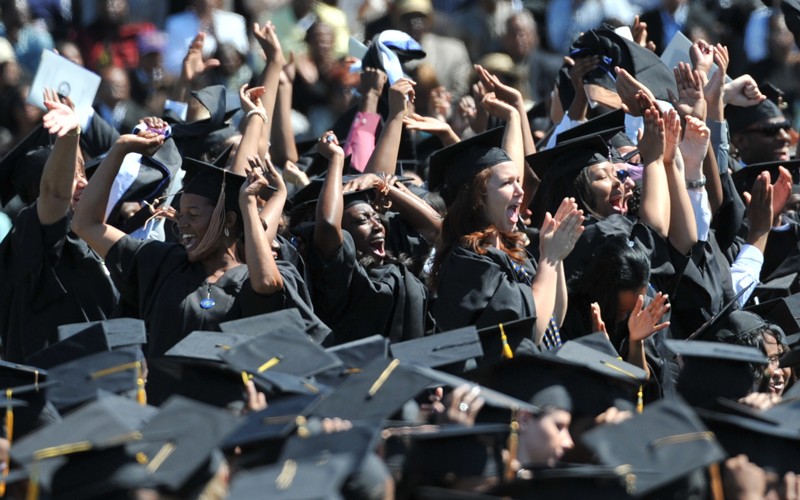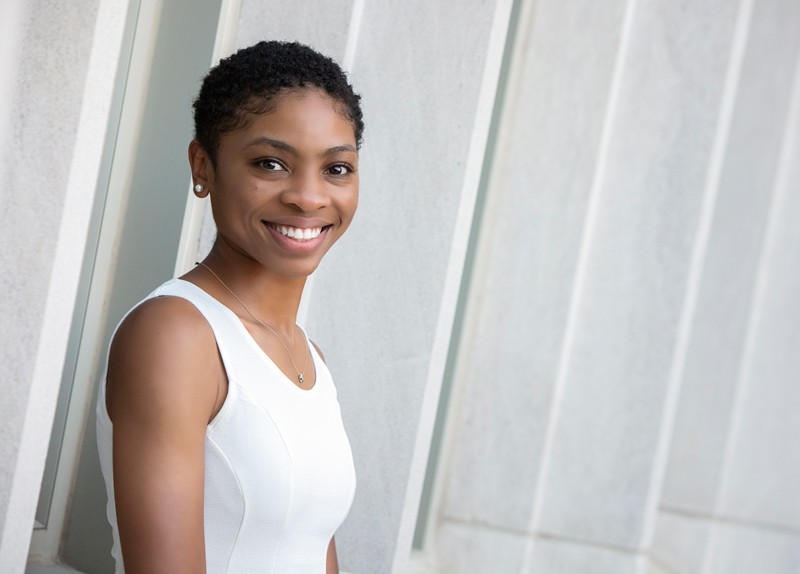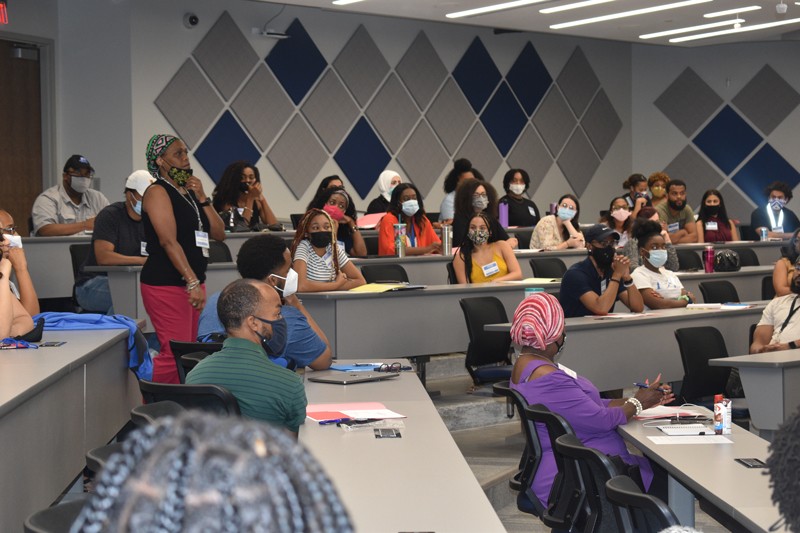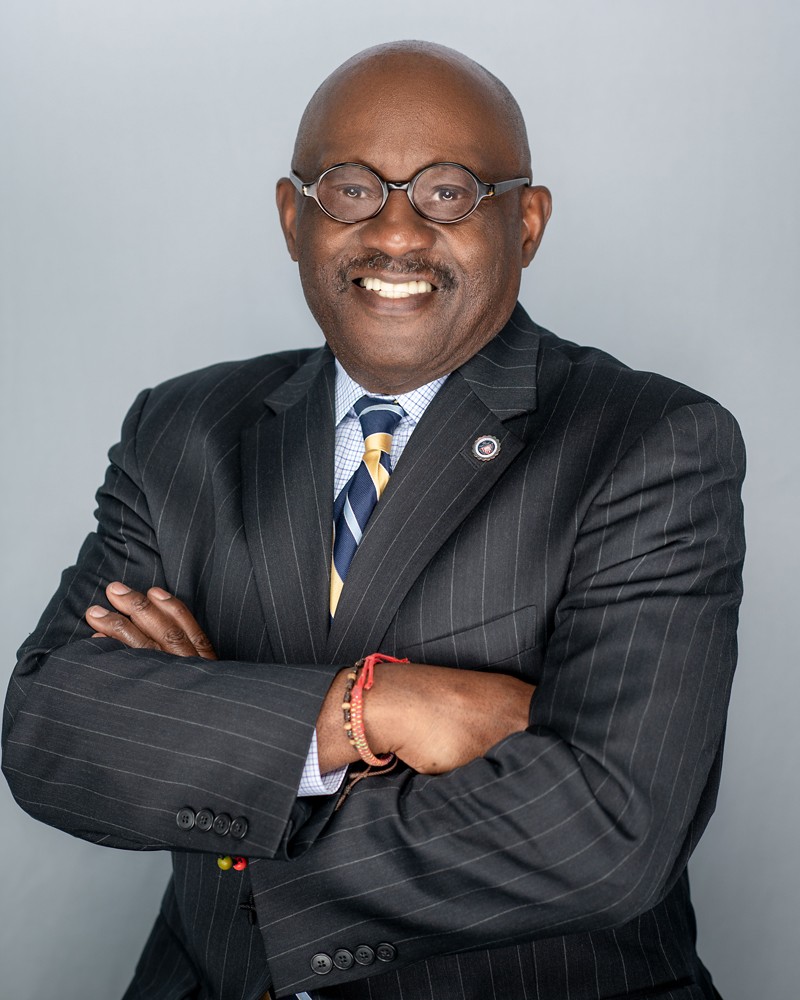More than 100 historically Black colleges and universities (HBCUs) operate across the United States, most dating to the late 1800s, when they were founded in the wake of the US Civil War.
Nearly 20% of the nation’s Black population who hold an undergraduate degree in science, technology, engineering and mathematics (STEM) earned it at an HBCU institution, as did one-third of US Black people with a PhD.
Although HBCUs excel at creating a nurturing environment for Black students, many have struggled to secure the same financial resources — including endowments and federal and state funding — as predominantly white institutions (PWIs). Many also find it difficult to recruit and retain Black faculty members in STEM disciplines.
US federal and employment data suggest that Black and Hispanic adults are less likely to earn degrees in STEM subjects than in other fields. And the proportion holding STEM bachelor’s degrees continues to be lower than for the US adult population as a whole, the data indicate (see go.nature.com/3tmuf7).
Federal agencies and other organizations have tried to address some of the disparities. The US National Science Foundation awarded US$9 million in 2020 to investigate HBCUs’ record in promoting student well-being and conferring degrees on Black students, including those in STEM PhD programmes. Some HBCUs have secured funding in 2021 to bolster their STEM offerings.
As HBCUs experience a record surge in enrolment for the 2021 academic year, Nature spoke to five scholars who work at or attended an HBCU about why the institutions are key to increasing the Black STEM workforce.
TAYLOR HARRIS: Instil pride and confidence
PhD student specializing in bacterial pathogenesis in cotton at Washington University in St. Louis, Missouri.
I decided to attend Fisk University, a private HBCU in Nashville, Tennessee, at 16 years old. I wanted my skin colour to be the last thing to provide any hurdles for me in college. Fisk lived up to my expectations. I think HBCUs typically have smaller classes than other universities, and this helped me to build a community and flourish. Professors and mentors are akin to aunts and uncles, invested in student success enough to ask about well-being after absences. They were able to reach me in a way that I don’t think I’d have experienced elsewhere. They could identify with students and communicate in a way that I was receptive to, which helped a lot. Feeling comfortable with my professors also helped me not feel afraid to make mistakes. I was always calling out wrong answers in chemistry class because I was never afraid to be wrong.
Even though students at Fisk couldn’t major in plant biology, I got interested in plants when my freshman biology course focused on the topic for a few weeks. Every summer, I did research internships at different institutions to get experience in all aspects of plant molecular biology. My first internship was at the Chicago Botanic Garden in Glencoe, Illinois. In the next one, I studied the effects of plant extracts on cancer at Vanderbilt University Medical Center in Nashville. My final internship was at the Plant Gene Expression Center, affiliated with the University of California, Berkeley, where I studied resistance to a bacterial pathogen in wild tomatoes.
This last period sparked my interest in plant–microbe interactions. During all my internships, I was also learning for myself that Black people are not represented well in science. I was never the only person of colour, but I was definitely in the minority. As a result, during my first two years in a PhD programme at Washington University in St. Louis, Missouri, I developed anxiety. I had never had problems with anxiety or confidence before then. Coming to a PWI has been a culture shock. I’ve been blatantly ignored when speaking. And people have said inappropriate things that they think are funny. These might seem like small things, but they eat away at you, a little bit at a time.
Still, I’ve learnt how to navigate this space. Washington University has a programme for doctoral students in biomedical sciences, the Initiative for Maximizing Student Development, which is designed to support students like myself from under-represented backgrounds. It’s helped me to create a network and is an example of what PWIs can do to support Black students. You can get support and find cultural resources at PWIs, but you have to seek them out. At an HBCU, that support is more universal. We all come from different backgrounds, but we still have a sense of understanding of each other.
The allocation of more resources to HBCUs is needed now more than ever, to eliminate the gap in Black STEM representation. HBCUs do a good job of training their students to feel confident enough to succeed in STEM spaces. Let’s put the money where it’s working well. My ultimate career goal is to return to an HBCU and contribute to cultivating the Black STEM workforce. There’s a great sense of pride after graduating from an HBCU, and doing that offers an instant connection with people who have gone to one.
JALAAL HAYES: Create a nurturing, familial environment
Assistant professor of chemistry at Lincoln University near Oxford, Pennsylvania.
I graduated from high school at 15 before starting my bachelor’s degree in chemistry at Lincoln University, near Oxford, Pennsylvania, the first degree-granting HBCU in the United States. In 2008, when I was attending, the majority of my professors were Black, although now there is more diversity. I had never seen Black scientists in my life until then. Their presence motivated me to stay in chemistry throughout my three years at Lincoln. I graduated from high school in two years, college in three and graduate school in four.
After gaining my degree from Lincoln, I did an internship at Howard University in Washington DC that focused on atmospheric chemistry. I went on to train for a PhD, studying renewable energy and climate change at Delaware State University in Dover, the only HBCU in that state. It’s quite small — with roughly 5,000 undergraduate and master’s students — but it’s like a family. Everyone looks out for one another. During the second semester of my first year, I worked with Andrew Goudy, director of the university’s Hydrogen Storage Research Center, to produce an innovative hydrogen-storage system. We published a paper on it (T. Durojaiye et al. J. Phys. Chem. C 117, 6554–6560; 2013) and filed a US patent in 2013.
After that, I was invited to a Gordon Research Conference — a series of international, off-the-record conferences to discuss frontier, unpublished research — in Barga, Italy, to speak on the technology. That was cool — I was 20 years old, it was my first international science conference and I met researchers from places like Africa, Australia and Denmark. Just four people at that conference were Black.
In June 2015, I became the youngest PhD student in applied chemistry at Delaware to finish my doctorate. To help expand the Black STEM workforce, I was hired there in 2017, before returning to Lincoln University in 2019, where I’m working to get more black STEM gradudates engaged in chemistry — particularly in the clean-energy area, a predominantly white field. The Black STEM workforce training has always taken place at HBCUs; now people are becoming more aware of these universities’ successes in this area.
If an institution wants to recruit and retain Black talent, it has to be culturally inclusive and not treat Black students as a check mark. Being culturally inclusive is one thing that HBCUs have always done well. When a Black person — be they African American, Caribbean or from other parts of the diaspora — steps into a HBCU campus, it feels like home identity-wise. We know that we share many of the same struggles, and that makes us a family no matter our backgrounds. However, at a PWI, Black students have to navigate how to fit into the culture. When a Black student hears the word ‘homecoming’ at an HBCU, they know it’s going to be a big family barbecue; at a PWI, a homecoming usually centres on a football game.
With prospective graduate students, I don’t target schools but programmes, especially for STEM. I encourage my students to focus not on Harvard or Yale universities but on who is doing great work in a specific scientific field. I want them to go where they will excel in a particular field without their mental health taking a beating because they don’t feel like they belong. My undergraduate and graduate students increasingly want to go to HBCUs — an interest that has grown in the wake of the George Floyd murder last year and the 400th anniversary of the first captured slaves being brought to this country in 1619.
ANDREA TYLER: Focus on identity and socialization
Director of graduate student services and POTUS fellowship at Tennessee State University in Nashville, and author of Seeing The HiddEn Minority: Increasing the Talent Pool through Identity, Socialization, and Mentoring Constructs.
I earned a mechanical engineering degree in 1989 from North Carolina Agricultural and Technical State University, an HBCU in Greensboro. I put theory to practice when I accepted a job in 1990 at NASA in New Orleans, Louisiana, in design and product engineering. That was my first experience with a non-inclusive, non-diverse environment: I was the first Black female in my department. Adversarial moments came in different ways, from being excluded from meetings to being socially isolated. At that time, diversity, equity and inclusion were not buzzwords.
I was laid off as part of a downsizing in 1995, and ultimately got a PhD in engineering education. My research today focuses on how to further enhance representation of Black people, particularly women, in STEM. I always tell people that my research is who I am; that’s why I do it so well.
After a few years at two different PWIs, I came to Tennessee State University (TSU) in Nashville in 2011, with the hope that there would be more STEM students from minority groups, but that was not the case. PWIs not only have more money to offer graduate students — they are also better able to expose students of colour to STEM topics. HBCUs typically don’t have the same financial resources, equipment or facilities in STEM programmes as PWIs do. So, in 2014, I got a grant from the US Department of Education to launch a fellowship programme called Preparing Our Tomorrow Uniquely in STEM (POTUS).
The fellowship pays a stipend as well as covering tuition, research supplies, books and travel, and it offers mentoring and seminars on such issues as career pathways or how to socially engage as a member of a minority group in a majority setting. All the things I felt I lacked during my graduate career, I built into this programme. I don’t want my students to worry about anything other than breathing and going to classes. I want to take away all the other stressors so they can focus on doing good work.
When I started the POTUS programme, not many students applied because it wasn’t well known and there was too much competition from other STEM programmes. I would try to recruit, but I couldn’t compete with PWIs that were better funded and resourced.
The fellowship programme started taking off, however, around 2018, when we were at a full capacity of 21 graduate students; by 2020, we had a waiting list. Now, students from all over the country apply. Still, the TSU doesn’t have the financial wherewithal to institutionalize this programme at the scale it has now reached. On average, the grant pays around US$75,000 per student per year. If the TSU were able to take it on, it would be at a much smaller scale.
Celebrity validation — from singer Beyoncé promoting HBCUs in recent concerts to US vice-president Kamala Harris being a graduate of Howard University — has helped to instil pride and raise interest within the Black community in attending HBCUs. Although these institutions excel at creating a sense of family or community, they still struggle to recruit Black STEM professors. When I attended an HBCU, I had one Black American STEM professor; at the TSU right now, I estimate that less than 10% of professors in the engineering and computer-science departments are Black.
Despite the funding challenges, those of us who work at HBCUs do so because we love to be at these institutions. At HBCUs, we often have to be resourceful — writing grant applications or partnering with a university to get access to STEM equipment. I care so much about these students that I write applications, seek out employers, network with companies to help students find jobs. That’s why I came back to an HBCU — to give back.
ANTENTOR HINTON: Rethink rankings and funding
Assistant professor of molecular physiology and biopyhysics at Vanderbilt University in Nashville, Tennessee.
I was quite under-confident when I started my bachelors’s degree in 2006 at Winston-Salem State University in North Carolina. I did nursing and biology initially, but ended up majoring in biology with a minor in chemistry.
The class I took in botany changed my life. I loved it. I didn’t know about cell or plant biology, or that plants have individual cells with molecules moving around. I loved the variety of teaching styles at Winston-Salem. Maths isn’t my forte and I didn’t like calculus, but one professor taught it in a way that suited me and made me want to do more of it.
Another professor there, Morris J. Clarke, who studies biochemistry and pharmacology, taught me never to settle for anything other than excellence. He believed in me even when I didn’t myself. There was a mandatory course on African American culture that straddled history, literature, art, music and dance. It looked at historical and cultural roots in Africa, slavery in the United States, and the post-slavery period up to contemporary times. All these different experiences made the university feel like a complete brotherhood. In its cafeteria, you could talk to anyone about anything. Everyone went there.
In 2008, I took part in one of the 10-week Summer Research Opportunity Programs run each year by Duke University in Durham, North Carolina. These give undergraduates experience in graduate-level biomedical research, but I also picked up some good life lessons there: how to interact with individuals, how to repair relationships when networking didn’t go well, how to be collaborative. I also found life-long mentors there. At an event run by Duke’s Bouchet Society (an all-Black graduate and postdoc community named after the first Black person to earn a PhD at a US university), I met a Black graduate physicist who talked about time travel. He was in the Alpha Phi Alpha fraternity, the nation’s first intercollegiate historically Black fraternity.
For HBCUs, fraternities and sororities have historical relevance to what a Black person can achieve. Until I met this graduate, I had not known Black people were physicists. I thought, “If they could get into a top graduate school and do well, then so could I.” I plan to join Alpha Phi Alpha once I settle down here.
I now work with Winston-Salem’s chancellor, provost and dean’s office, and with its biology department, on grant-writing, career development and mentoring programmes, and I do some bioinformatics teaching. HBCUs are still very much needed alongside PWIs, but the partnerships between them need to be more equitable, with PWIs reinvesting in HBCUs when they take time and talent from them.
Rankings also need a rethink. The US News & World Report rankings, for example, treat HBCUs separately from PWIs. But at the undergraduate level, HBCUs are serving different populations from those served by PWIs. They also have less funding and resources, which needs to be recognized.
I’d like to see a higher investment in HBCUs from the US National Institutes of Health (NIH). The R01 grant, its original funding programme for individual scientists or multi-investigator teams, offers supplements to fund such applicants as graduate students or postdocs. But the NIH doesn’t have ‘Phase 2’, follow-on, supplemental funds for HBCU faculty members to apply for research support. This would give them a second line of funding besides the conventional mechanisms.
Philanthropy is another issue. HBCUs don’t need a one-off donation from a billionaire. It’s better to have continuous investment so that they can do exploratory research into topics such as health disparities that are less covered and that affect their local communities.
Vanderbilt University, where I started my laboratory in January, has three HBCUs nearby (East Tennessee State University in Johnson City, and Fisk University and Meharry Medical College, in Nashville). We take their students. It’s important to hold your hand back out when you reach a position where you can help others. If you have the luxury of helping lots of people, then do it.
RONALD SMITH: Be culturally inclusive
Director of the Karsh STEM Scholars Program at Howard University, Washington DC.
I am not a STEM professional, but I attended Morgan State University, an HBCU in Baltimore, Maryland, to conduct doctoral research in urban-education leadership. I spent more than 20 years in administration, both at the University of Maryland, Baltimore County (UMBC), the top non-HBCU in producing Black undergraduates who complete PhDs across the natural sciences and engineering, and at Baltimore City Community College. An old friend at Howard University hired me in 2016 to replicate UMBC’s Meyerhoff Scholars Program, a successful initiative mentoring students from minority groups that are under-represented in the sciences. Our version is called the Karsh STEM programme, after receiving a US$10-million endowment from the Karsh Family Foundation in 2020.
Meyerhoff is a wonderful template, but it’s in a PWI setting. We had to change some things to optimize it, because we’re the only replication of the Meyerhoff programme in an HBCU setting. The design didn’t change, but the way in which we interact with students did. For example, all the students in our programme come from a wide range of under-represented groups. Often, students who are from minority groups have experienced trauma from racism or social exclusion in the communities they come from. By the time they get to us, those issues are largely unaddressed and the students can reach a breaking point. We help them to deal with those traumas, first through mentoring, particularly if we can align them with an individual — a student or professor — who has faced similar challenges. We also offer counselling services to help students deal with sometimes dark issues.
In our six-week summer bridge programme, students take two academic classes — in maths and in African American studies — and attend three seminars, one of them on chemistry. There is also a college-success seminar focused on emotional wellness and resilience. Overall, the programme aims to fortify the students and address some of the emotional factors that they need to overcome to achieve success. We talk about things such as developing grit, and understanding how to choose a growth mindset versus a victim mindset. We teach students how to become creators who are able to take responsibility for their own self-management and personal development.
It’s not unusual for students who experience housing or food insecurity during semester breaks to be taken to an administrator’s home and given care and support. Not all institutions are going to provide that kind of support — especially if they don’t know that students need it. If a student doesn’t feel welcome and supported, their sense of belonging becomes fragile. Fewer students who belong to under-represented groups will make it to the end of the journey without that support.
I think programmes such as ours, particularly at HBCUs, prepare students for what to expect, and show them how to survive and how to build their own safety nets and support groups. We encourage them to reach back out to us for support when and if they are not getting it — but not to give up on the journey. The 30 students in our inaugural cohort are now graduating; 100% will graduate by spring 2022. They are going to some of the most respected universities in the country — such as Johns Hopkins, in Baltimore, Maryland; Stanford, in California; Columbia, in New York City; and Yale, in New Haven, Connecticut — with a commitment to pursue a PhD or MD–PhD.
I remind white colleagues that they have a huge responsibility to challenge any racist or demeaning things that are said. It’s not enough to be an ally; somebody’s got to be a disruptor. We can have all the diversity, equity and inclusion officers that an institution wants, but if we can’t get the cultural environment to change, we are not going to make progress.






More Stories
Transforming Appearances with the Perfect Hairpiece Touch
Exploring the Wonders of Modern Sciences
How Sciences Unlock the Mysteries of the Universe